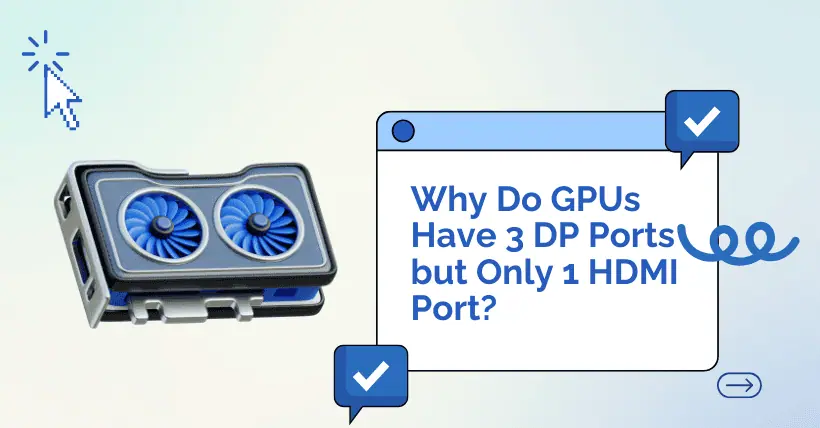If it weren’t for HDMI’s widespread adoption, there might not even be a single HDMI port on graphics cards.
While HDMI is more mainstream across a variety of devices, DisplayPort (DP) has clear advantages when it comes to graphics cards. Here’s why:
1. Technical Support and Purpose
DisplayPort (DP) was developed by an alliance of PC and chip manufacturers and standardized by the Video Electronics Standards Association (VESA), making it more aligned with the needs of the PC and graphics card industry.
On the other hand, HDMI was initiated by consumer electronics companies, including major TV and display manufacturers like Hitachi, Panasonic, Philips, Silicon Image, Sony, Thomson, and Toshiba in 2002. The founding members of HDMI had no involvement with graphics cards and did not design HDMI to maximize GPU performance. Essentially, graphics card manufacturers play a role in the development of DP, but HDMI’s evolution is outside their control.
2. Higher Bandwidth
Bandwidth is crucial for supporting high resolutions and frame rates, and DP outshines HDMI in this area:
- HDMI 1.4: Supports 4K resolution but limited to 3840×2160 at 30 FPS due to bandwidth constraints.
- HDMI 2.0: Increased bandwidth to 18 Gbps, allowing for 4K at 60 FPS.
Meanwhile, DisplayPort versions have continued to surpass HDMI:
- DP 1.2: Commonly found today, offers 21.6 Gbps bandwidth, supporting 1080p at 240Hz, 2K at 165Hz, 4K at 75Hz, and 5K at 30Hz.
- DP 1.3: Supports 4K at 120Hz and 8K at 30Hz.
- DP 1.4: Offers 32.4 Gbps bandwidth, with DSC (Display Stream Compression) technology that allows for 4K at 240Hz and 8K at 60Hz, along with support for HDR, Forward Error Correction (FEC), and 32-channel audio at 1536 KHz.
3. Lower Cost
DisplayPort is royalty-free, meaning manufacturers don’t have to pay licensing fees to use it. HDMI, on the other hand, requires manufacturers to pay an annual membership fee and a fee for every product sold with an HDMI port.
In contrast, DP’s open nature means that it’s cheaper to implement for manufacturers, especially in high-volume production. Given the lack of fees, DP is more cost-effective for graphics card makers.
In Summary:
DP is superior in terms of performance, flexibility, and cost for GPU manufacturers. It’s not only better suited for high-end graphics tasks, but it also comes with no licensing fees. If graphics card manufacturers had their way, they’d likely prefer to use only DP ports on their products.
HDMI continues to be included primarily because of its widespread usage across consumer devices, such as TVs and home theater systems, but from a technical perspective, DP is the better choice for graphics cards.

Disclaimer:
- This channel does not make any representations or warranties regarding the availability, accuracy, timeliness, effectiveness, or completeness of any information posted. It hereby disclaims any liability or consequences arising from the use of the information.
- This channel is non-commercial and non-profit. The re-posted content does not signify endorsement of its views or responsibility for its authenticity. It does not intend to constitute any other guidance. This channel is not liable for any inaccuracies or errors in the re-posted or published information, directly or indirectly.
- Some data, materials, text, images, etc., used in this channel are sourced from the internet, and all reposts are duly credited to their sources. If you discover any work that infringes on your intellectual property rights or personal legal interests, please contact us, and we will promptly modify or remove it.



